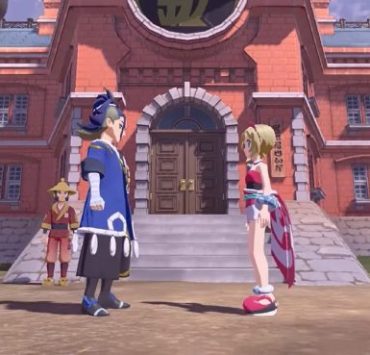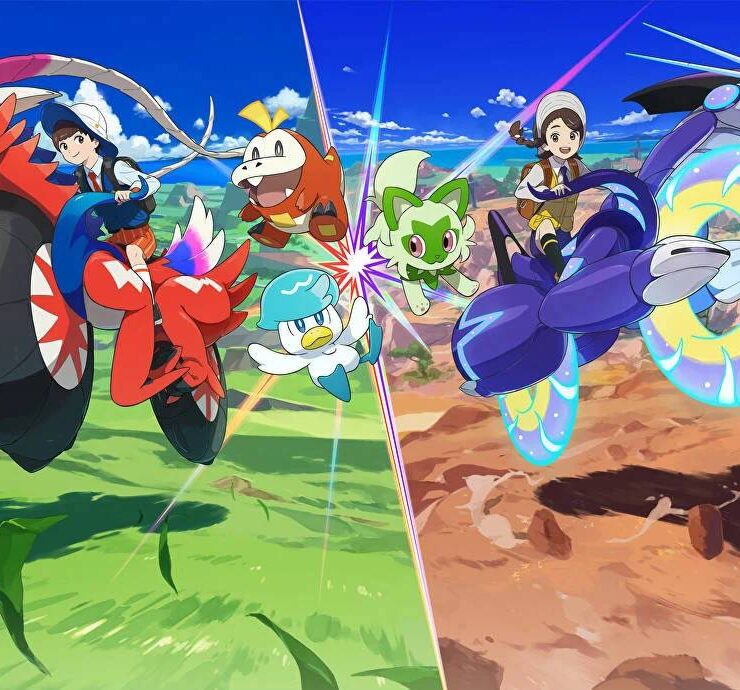The 7 Deadly Sins of Game Design

Game design and development are incredibly tough jobs, but like any profession, there are grave mistakes that can completely ruin one’s hard work. “The 7 Deadly Sins” are a grouping of vices within Christianity that dictate the terrible offenses that will destroy one’s life. Well, today, I am going to share what I believe to be The 7 Deadly Sins of Game Design, and this is something I have been thinking about for a long time now, especially since I have been reviewing games professionally.
This list is going to cover decisions within the game development phase that are seemingly ignored or neglected, because these sins can genuinely ruin a game by their existence alone. Now sure, there are some amazing games out there with some bad designs, but it is still worth pointing out that these amazing games could be even better if they fixed their problems and made the experience for the player even greater.
Well, without further adieu, these are The 7 Deadly Sins of Game Design.
Illogical Puzzles

When it comes to illogical puzzles, no genre is worse than point-and-click adventures. For every Grim Fandango and Maniac Manson out there, you have a Leisure Suit Larry 5, Monkey Island 2, or The Longest Journey that makes you want to pull your hair out at times. Puzzles that simply make no sense or require way too much abstract thinking out of its players create a painful and daunting experience.
Although point-and-click adventures tend to be the worst offenders, there are other titles that commit this crime incredibly. Take for example the Red Colony series. I reviewed Red Colony 1 in January 2020 and found the puzzles to be either stupidly easy or illogically stupid. Well, Red Colony 2 came out months later and did it even worse (There is also a third one on the way, and I can’t imagine it will get better). Although the Red Colony series is littered with other problems, it is the illogical and nonsensical puzzles that make the whole experience nearly unplayable.
So what is an illogical puzzle? Well, it is exactly what it sounds like. It is a puzzle that simply doesn’t make sense. In point-and-click adventure games, this is usually most problematic in exchange quests, where you need to trade items until you get the one you need. A lot of the time, you have to think way outside the box to make sense of what the game is trying to get you to do. Take for example the infamous Monkey Island 2 monkey wrench puzzle. There are workshops in the game that you can go back to, and yet, none of them have the tool you need to turn off the water. Instead, you need to 1) get a banana, 2) hypnotize a piano-playing monkey, and 3) well… use the monkey as a… ugh… monkey wrench.
You see, that joke only works in North America, even if the puzzle is stupid illogical, so other English speaking countries that refer to the tool as a spanner, stillson wrench, or obstruction wrench were met with something that simply made no sense. Sure, this is a cultural puzzle, but it is ones like this that occur frequently in point-and-click adventures that use a lot of regional and cultural references that only land in their particular parts of the world.
But don’t think other genres miss out on this, because even big titles in the Metroid series, the Zelda series, and even the Super Mario series have committed this crime with little-to-no accountability. But I see your sins, and you are not forgiven.
Terrible User Interface

When it comes to accessibility, few things turn casual gamers away like a terrible user interface. This is particularly problematic in MMOs (Massive Online Multiplayer games), as the screen can be littered with menus, buttons, chats, etc. When the user interface during gameplay is a mess, that is when things are the worst. Developers spend years of their lives building beautiful worlds, dungeons, and unique areas, and then when people are playing it, they can barely revel in it due to the overflooding of menus.
But we have seen this sin pop up in many other genres as well, with Grand Theft Auto V being hailed one of the worst. In GTAV, the things depicted on screen while playing are fine, but it is the pause menu and its insane set-up that is a pain. When GTA Online first launched for the title, players had no idea how to access online play with friends, because the options are so buried in a strange way that it is near impossible for casuals to find.
It is usually the MMORPGs that are the worst offenders, and games like Dissidia Final Fantasy NT commit this sin not just in the pause menu but also in the game screen. Seeing labels, health bars, and flashing numbers for every single hit coming at you hard on screen causes players to honestly miss a lot. For Nintendo, Xenoblade Chronicles X is another offender that is worth mentioning, because it is a criminally underrated title with some very ugly UI that does not help its cause.
At the end of the day, the amount of clutter on screen is exactly that: clutter. If it is designed well and compliments what is happening on screen and is easy to navigate, that is a different story. When you cannot figure out how to use the UI even after a complicated tutorial, the problem is not the player. It is the design. A major unforgivable sin.
Softlocking

This is such a grave offense that it was the very first one I thought of when compiling these sins. Even the recently released Pokemon Brilliant Diamond & Shining Pearl had an awful softlock in the Snowpoint City Gym that prevented the player from moving and progressing, with the only option being to turn the game off and restart. Thankfully, this has since been patched, but the sin was committed!
For those unaware, softlocking is a design flaw or a glitch that renders a game unplayable due to an impossibility to progress and move on. The term became more mainsteam once Super Mario Maker released on the Wii U. As you can imagine, user created levels would softlock players left and right, forcing either a) the timer to run out or b) to quit the level. It became such a common term within the Mario Maker community that it turned into something fun, with kaizo levels inserting entertaining anti-softlocks into their level to infuriate their players as they attempted extremely difficult ways to kill themselves.
But those are user created. How in the world can a globally released title contain such a major flaw? You would think during the testing phase, someone would point this out, and yet games, including major AAA ones, release with the ability to softlock the player and a) causing them to lose all of their progress or b) forcing them to wait for a patch that fixes the horrendous sin.
On a positive note, Portal 2 fights back at this really well, which I appreciate very much. If the player somehow locks themselves in a room with no escape, GLaDOS will insult you and then open the glass door to let you back out. This is a nice design to combat what would otherwise be a horrible design. Unfortunately, Portal 2 is in the minority, as the majority of the time softlocking goes unnoticed.
This sin is, in my opinion, the worst. I would even say that it is the most unforgiveable sin in game design. Truly the deadliest, as it can render a title genuinely unplayable.
Microtransactions

Oh, the greed of The 7 Deadly Sins of Game Design. This one is probably the most universally known by gamers, because it has so unashamedly inserted itself into so many games the last 20 years, and no matter how much we hope and pray it will go away, this evil seems like it will only get worse and worse.
Star Wars Battlefront is a grand example of how this is done wrongly. When the game initially came out, it was relatively bare bones in regards to characters that buyers began to speculate that EA held many of them back to sell as a premium package later. Well, those speculations instantly became true once the $50 Season Pass was introduced to bring in very little for the price. You basically had to buy the game twice to get the full experience, but not only that, people who bought the Ultimate Edition got the best weapon in the game instantly. A clear advantage to those who spend the most money. You would think Battlefront 2 would have turned from their sins, but this is EA we are talking about. That would never happen.
Then you have games like Fortnite, one of the most popular titles in the world, raking in tons and tons of money from individual players. The model of “free-to-play” is quite the contrary. If you want to play the game and have the online strong online presence (You know, “looking cool”), you need to invest big, and considering the player market for Fortnite, it is no wonder that millions and millions of kids are asking for V-Bucks during birthdays and other holidays. To put it into perspective, your average Fortnite player in the US spends over $100 per year on average, which is… well… not free at all.
The idea is basically ripped right out of a casino, and the goal for these games is to find a “White Whale“. White Whales are people who routinely spend excessive amounts of money on gambling, investments, and premium content. Companies like EA have learned quickly that targeting these individuals is better for business than trying to sell a million copies of any one particular game, so the more White Whales, the better. The problem with this is that it encourages poor habits and sucks certain people dry. It would be like constantly offering alcohol to an alcoholic. They already have a problem, so why are you making it worse?
This is one of the most disgusting and dastardly sins on the list, because it is not even really a design problem. This is a marketing strategy that has plagued the gaming world, and it is only getting worse day-by-day.
Blind Jumps

You know what sucks? Not knowing where you are going. There are a lot of games out there that leave the player blind in regards to direction, but this sin is much worse. Blind jumps are a major problem in 2D platformers, particularly, that put the player in a terrible position. I mean, who would want to just blindly jump off of a ledge in hopes that a platform is waiting beneath them? Death by blind jump is one of the stupidest ways to die in video games, because it is solely the fault of the design and not the player.
During the heyday of platformers back during the SNES and SEGA Genesis era, there were many titles that used blind jumps to “ramp up” the difficulty of a game. There are easy games like Taz Mania that we can make fun of for its overuse of this horrible idea, but we also have to remember that major titles like those in the Mega Man series regularly had vertical stage sections that just dropped you into a seemingly endless scrolling of insta-kill spike walls or some other deadly hazard. Since the Mega Man series was praised back then, tons of titles mimicked some of the designs of the series and did so horribly.
One that really stands out to me is Mega Man Zero 2 on the Bombardment Aircraft stage. The beginning of this level is already random, as the platforms move back and forth in no order or rhythm that matches another play, and then at one point towards the end of this first section, it just expects you to jump down onto another moving platform that you cannot see. An area outside the window of your view, which means this and other areas like it depend on trial-and-error to clear and not necessarily skill.
Sonic titles were also often guilty of such a sin, but then something like Spelunky came along and offered a very simple tool that made 2D platforming so much better: the ability to scroll the map up or down to see upcoming obstacles. Other games have done this in the past, but unfortunately most did not learn to do this during the heyday. This ultimately allowed for the continuing of blind jumps to infect not just 2D platformers back in the 1990s but also indie games today and even some AAA 3D action/adventure titles.
This is an egregious offense that deserves to burn in gaming hell, because again, death or damage is not the player’s fault here but the design. Your sins are seen, and they will fry!
Bad RNG

I can hear some people in the background saying this is irrelevant to this topic, but let me remind you that this deadly sin is real and it sucks.
For those who don’t know, RNG (Random Number Generator) is an algorithm that produces random numbers. For video games, these random numbers are used to determine random events, like your chance at landing a critical hit or finding a rare item. Consider RPGs and dungeon crawlers as two genres that very much depend on this mechanic.
Well, as helpful as RNG is for certain games, it is a nightmare when it is applied poorly. One of the first that comes to mind is the tripping mechanic in Super Smash Bros Brawl for the Wii. Randomly throughout the match, characters would just trip and fall for no good reason. This absolutely ruins the experience for fighting game enthusiasts, and it hurt Brawl‘s chance of being taken seriously as a competitive fighting game. Mario Kart Wii similarly punished players in first place with a harsh probability matrix that guaranteed the leading player could not get a good item.
But that’s not the only time RNG can be bad. For example, World of Warcraft features “loot rolls” ranging from 1 to 100, but this does not generate those numbers in a 1 to 100 range. If they are generated as 16-bit integers ranging from 0 to 65535, the code will then turn that into a 1–100 number. It might “reroll” any number greater than 65499, since those would skew the results. Then it would divided by 655 and add 1. Not a very good system for those looking for good rolls.
Games like Destiny, Borderlands, and Diablo can actually reward one player with all of the best items on drops and another player with absolute garbage. In something like Pokemon GO, where the supposed shiny odds are 1 in 500, one player can get 5 shiny Pokemon in one day while the person playing alongside them the entire time cannot find a single one, despite the fact that they are both checking all the same Pokemon.
Many competitive gamers feel that RNG undermines skill. It can be an annoying complaint to hear, but it is only annoying because some competitive games, like Smash Bros and Mario Kart, lead a double-life as casual party games, too (Which require RNG to stay fun).
Some times the coding just sucks and your matrices need to burn, because you may think your work is perfect… but I am no idiot. This is basically slot machines and a crappy form of video game gambling. Bad RNG is evil, and it must die a horrible death.
Difficulty Spikes

Ah, finally. The seventh one, and it is a sin that finds its way into every genre and has attempted to rot so many fantastic games over the decades. Difficulty spikes are not literal spikes (I’m talking to you, son), but an image of a game’s natural flow.
One would assume that difficulty progression in a game would increase subtly over time, so if we were to illustrate it with a chart, it would start at the bottom left corner and diagonally move its way up and to the right. When it comes to difficulty spikes, though, this rhythm is anything but that. Level one can be easy-peasy, and then level two is a literal killer. You think, “Clearly something is wrong here. Why did the difficulty ramp up this high all of a sudden?” Well, then you more on to level 3, and things calm down again, only to move on to level 4 and it is painfully difficult. The image here is an up, down, up, down image on the chart, creating the depiction of spikes.
One of the most classic examples of difficulty spikes in a game is the 1991 NES title known as Battletoads. This beat ’em up starts off fine, although it is still a tough game, but stage 3 known as Turbo Tunnel spikes the difficulty in such a gross way. Considering Battletoads is 13 stages long, most players gave up after attempting Turbo Tunnel for the umpteenth time. To this day, Battletoads is considered by many as one of the hardest games on the NES, but I think that is an unfair evaluation. Battletoads is one of the poorest designed games on the NES because of its awful difficulty spikes.
Does anyone remember the William Blazkowicz Trial from Wolfenstein 2: The New Colossus? Nowhere to hide and not enough health to survive on higher difficulties, and clearly more difficult than any section before or after it. What about the Lady Yunalesca fight in Final Fantasy X? A rough battle that ramps up the difficulty of an otherwise average game, and death forces you to re-watch the long, unskippable cutscene again (Another sin that was considered for this piece). How about the Boost Guardian from Metroid Prime 2? A mini-boss that is significantly harder than any actual boss in the game, especially thanks to the Dark World draining your energy during this early-game battle.
There are honestly too many examples of this sin being committed, making it the “lie” of The 7 Deadly Sins of Game Design. It has seeped its way into too many titles, even top-tier ones, and it can genuinely cause players to quit the game long before the ending.
This one may get a pass from some people, but I still hate you, difficulty spikes. The world of gaming would be a better place without you, and I banish you to the depths of hell!
And those are The 7 Deadly Sins of Game Design! Thank you for stopping by Nintendo Link for all of your gaming news, features, and reviews. What do you think of this list of sins? Do you agree? Do you think something is missing? Or do you think any of these sins are forgivable? Let us know in the comments below! Happy gaming, everyone.
What's Your Reaction?
My name is Jason Capp. I am a husband, father, son, and brother, and I am a gamer, a writer, and a wannabe pro wrestler. It is hard to erase the smile on this simple man.








Loved the article, one of the best on the site, a great analysis of what makes the game industry with just enough humor to keep thing light hearted.